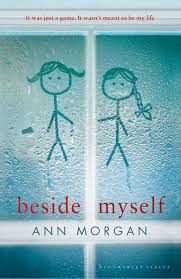Music

We were in the Mac Lab for this weeks music workshop exploring and trying out the tool ‘Garageband’. This is a tool that allows you to create any kind of music with different beats and melodies from a range of different musical instruments.
This kind of tool allows the children to be really expressive as they can create whatever kind of music they want to and be as creative as they want.
I thought this tool was a really modern and easy way for children to get the opportunity to play around with musical instruments their school may not be able to afford. The only thing I thought that could potentially make this tool less useful is the fact you can only use it on mac computers. Many schools do not have access to mac computers and so cannot access this amazing tool.
I have the freedom to use my voice, musical instruments and music technology to discover and enjoy playing with sound and rhythm. EXA 0-17a
I can use my voice, musical instruments and music technology to discover and enjoy playing with sound, rhythm, pitch and dynamics. EXA 1-17a
I can use my voice, musical instruments and music technology to experiment with sounds, pitch, melody, rhythm, timbre and dynamics. EXA 2-17a
(Education Scotland, 2009)
These outcomes would fit the use of garageband really well and gives the learners opportunities to play about with the different sounds and patterns.
This kind of tool makes the integration of music lessons in schools so much easier and gives children the opportunity to engage with music as it is such a beneficial area to take part in on so many different levels, from literacy and numeracy to social skills (Hallam, 2010).
Drama

This week in drama was our micro teaching week. In groups we had to choose a book and present it to the rest of our section as if it were a lesson. Two drama techniques had to be incorporated and had to get the whole section involved and participating, as you would a drama lesson.
We chose the book Beside Myself by Ann Morgan.
The book is about two twin sisters who swap places when they were young to trick their parent, but when it’s time to switch back, one twin doesn’t want to.
The first drama activity we done was getting everybody into pairs and getting them to pretend to be the other person and talk about themselves as though they were each other. This would put the children inside the heads of the twins and they would experience what it would be like to pretend to be someone else.
The second was a thought tunnel of the twin who wanted to swap back but in the end, whose identity was stolen. We got the section to consider how that twin felt being stuck in her sisters body and not being able to get back.
This was such a valuable exercise as it put us straight into the teaching of drama and I really enjoyed doing the activities and introducing the book to the class.



References
Education Scotland (2009) Expressive arts: Experiences and outcomes [Online]. Available: https://www.education.gov.scot/Documents/expressive-arts-eo.pdf [Accessed 7 Jan 2017].
Hallam, S. (2010) The power of music: Its impact on the intellectual, social and personal development of children and young people. International Journal of Music Education. pp.270–289.

 We were given a visual picture in this session and were asked to consider it in many different ways.
We were given a visual picture in this session and were asked to consider it in many different ways.














